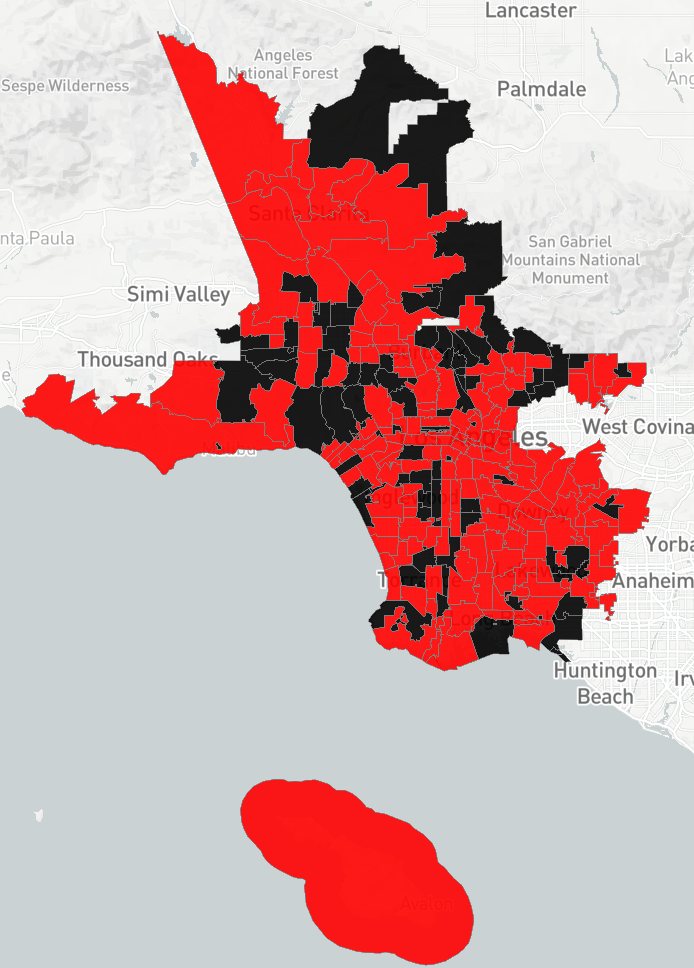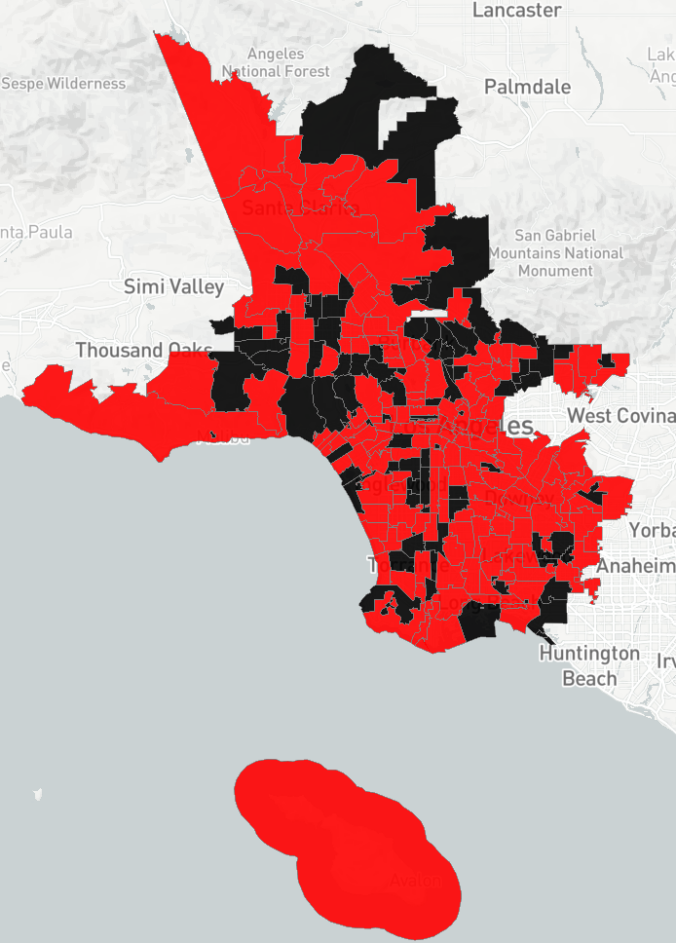LA’s Mexican and Chinese Restaurant Niches
A niche, as Popielarz and Neal say in their 2007 article is a set of environmental conditions under which a species thrives. As part of the Urban Genome Project, we are searching for the characteristics of ‘niches’ that allow for urban forms to reproduce, and how these characteristics may have changed over time. Here, we demonstrate our approach by applying the niche concept to Los Angeles’ restaurant scene. Stay tuned for more detailed studies.
Data for the maps comes from recent Yellow Pages directories, generously shared with us by the “friendly cities lab”. It may not be fully representative of all restaurants but there’s no reason to believe that it is biased.
According to this data:
- Nearly half of all zip codes with restaurants have both Chinese and Mexican restaurants, 19% just have Mexican restaurants and 17% just have Chinese.
- There is only a loose correlation betweeen the number of Chinese and Mexican restaurants in a zip code(r=.16)
- 56% of ‘Chinese-Only’ niches are in LA City but only 32% of Mexican Only ones are.
- Long Beach, East Los Angeles, and Santa Clarita stand out as cities with more Chinese restaurant deserts; Glendale stands out as a city with more Chinese Restaurant Deserts.
You can explore the trends with the maps pasted below, or at the app here.
Mexican Restaurant Niches

Map by Fabio Dias
Chinese Restaurant Niches

Map by Fabio Dias


